Let go of the iHunch: Improve your posture yoga practice
23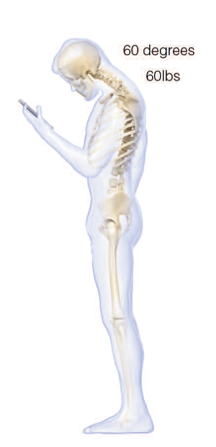 A few weeks ago I took my son to get a haircut and there was another family waiting ahead of us, a father with three boys ages between 5 and 12. Each one of them was interacting with an electronic device of some sort and each one of them was exhibiting some version of this posture. In fact, some are now calling this body position an iPosture, or iHunch, since most of us fold into it when we use our mobile devices.
A few weeks ago I took my son to get a haircut and there was another family waiting ahead of us, a father with three boys ages between 5 and 12. Each one of them was interacting with an electronic device of some sort and each one of them was exhibiting some version of this posture. In fact, some are now calling this body position an iPosture, or iHunch, since most of us fold into it when we use our mobile devices.
It’s pretty obvious that this kind of body positioning can create a lot of stress on the neck. The weight of the head is usually about 10-12 pounds, but the more you lean your head forward, the heavier will the load become. For example, if you lean your head forward 60 degrees (which is quite common), the load on your neck will be about 60 pounds, which equals 5 gallons of paint or 4 bowling balls. In addition to that, your upper back can become frozen in the forward curve and much less mobile, which can lead to a stooped posture.
Interestingly, latest research shows that this kind of posture is not just problematic for the body alignment, but has a great impact on your mental state as well. This recent article from the New York Times emphasizes that “posture doesn’t just reflect our emotional states; it can also cause them.” Studies show that the slouchers reported significantly lower self-esteem and mood, and much greater fear; they were more likely to be more negative when they talk, and recall more negative experiences. They also became less assertive. “In fact, there appears to be a linear relationship between the size of your device and the extent to which it affects you: the smaller the device, the more you must contract your body to use it, and the more shrunken and inward your posture, the more submissive you are likely to become.”
Think of the common expression “He walks with his head held high,” which projects confidence and self-assurance. When we droop our heads down we feel the opposite.
Since our electronic devices are not going anywhere, all we can do is be mindful about our body positioning when we use them. We can also try to counteract the iHunch by strengthening the muscles that support the body in the upright position, relieve neck tension and realign the spinal curves to improve the posture. This is what this yoga practice is about. Give it a try and let us know what you think!
Join Sequence Wiz to customize this practice to your liking. Choose your poses, enter the instructions and you are done! See it in action >

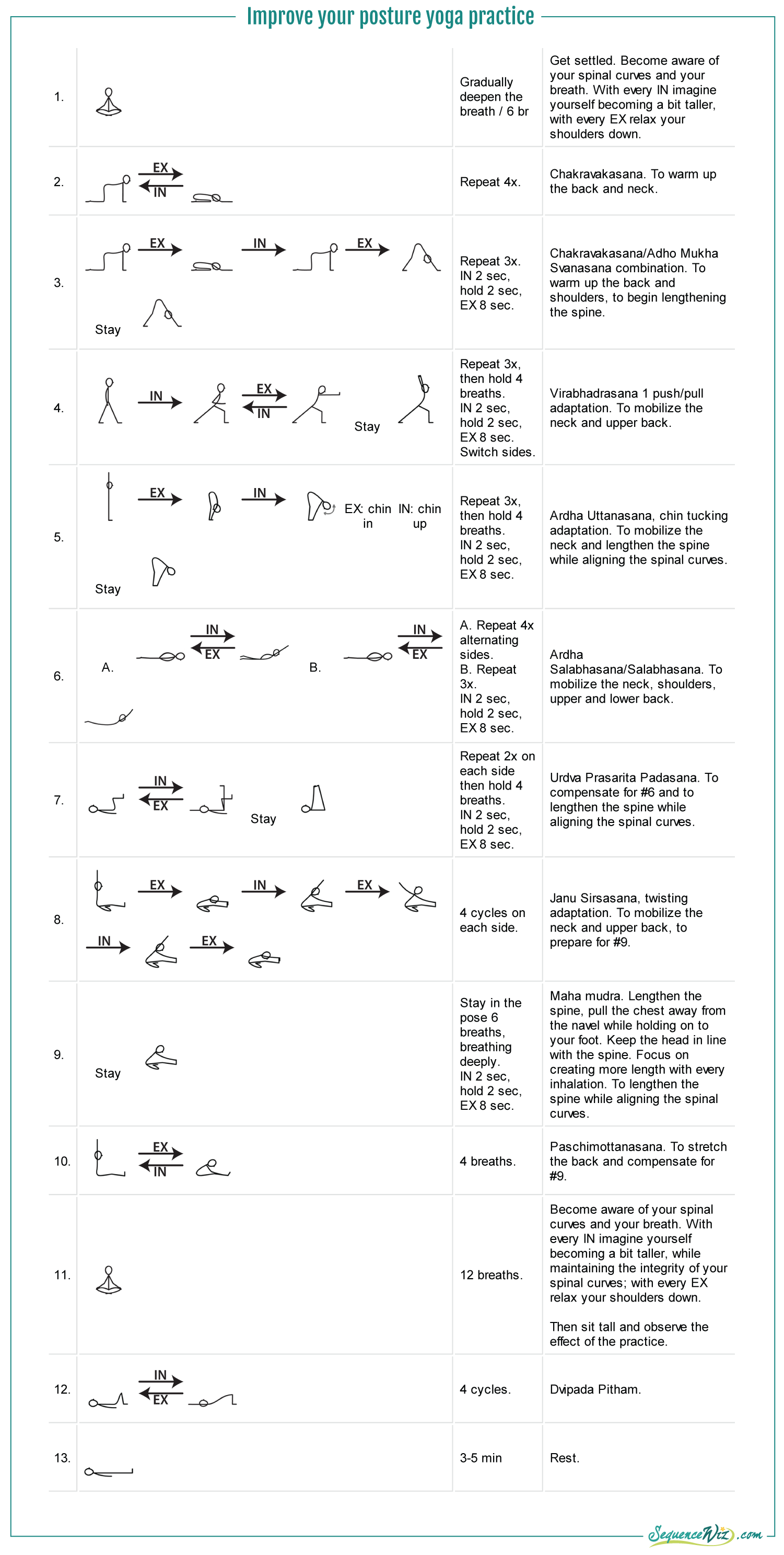

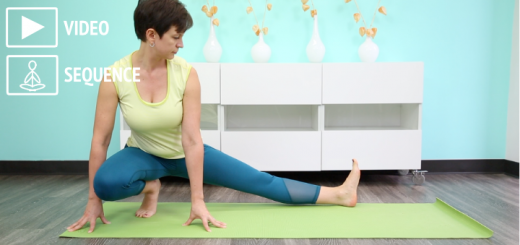
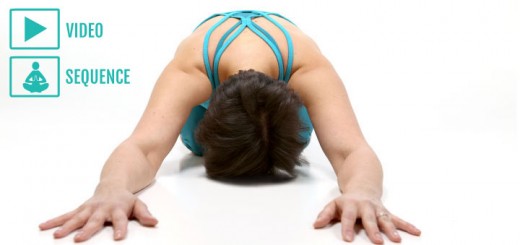
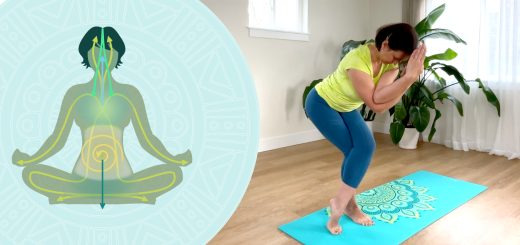
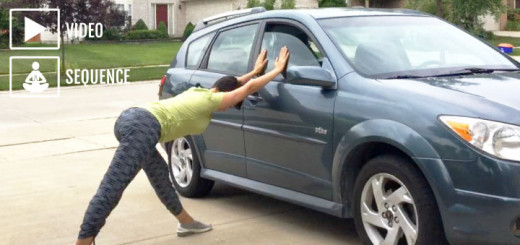















As always, your posts are terrific! Thanks for this one — so important!
Thank you Benjamin!
iHunch – that’s good. You should get a TM for this 🙂
Can’t claim credit for that – it was in the article that I referenced. But isn’t it a good one?
Thank you for this excellent article. I am always stressing posture in my music class. I will share this article with the students. Thank you!.
I’m so grateful that you’ve used colors in your site, your video and your clothing. I can never quite fathom why a yoga practitioner would select a hiding “color” like black for a practice that has no hiding at all.
As to the content, I think it’s relevant to mention that Dowager’s Hump and kyphosis in the thoracic spine are not the same. Dowager’s Hump IS kyphosis but kyphosis is not Dowager’s Hump (though unaddressed it can lead there).
I’m not a Viniyoga teacher and other than one workshop with Gary I’ve not been exposed to the practice. Lineage is crucial in yoga and Gary is an amazing teacher, as is his teacher, and his teacher’s teacher.
That said, since a point is made regarding the kyphosis and depression (or feelings of low self-esteem et al) and since kyphosis is a rounding in the thoracic spine, I wonder about the use of forward bends as a protocol for therapy. As a movement protocol there is no question (for me).
Balasana, Uttanasana, Janu Sirsasana, and Paschimotanasana do not counter kyphosis, in fact they exacerbate it. And energetically (or psychologically) they are introspective poses (go inside) which can take the student too deep emotionally.
For me, a protocol for kyphosis would have to include mild backbends of both passive and active variety. But again, this is my view and I acknowledge there are others. I’d be very open to hearing how rounding the spine helps counter rounding the spine and how introspective poses which close the anterior spine are helpful for sorrow.
Hi Gordon, thank you for your thoughtful comment! Few words in response: When I said “dowager’s hump” I meant it simply as a description, not a specific condition. Yes, it is not the same as kyphosis, but I wasn’t talking about kyphosis specifically either. I was talking about our tendency to slouch and stick the head forward when we attend to our electronic devices. You are exactly right, forward bends are not usually the first choice for depression. I didn’t say my practice was for depression though. My main point was that “posture affects the way we feel”, so my practice was meant to address the structural issues, not mental-emotional. If you look at the image of the practice you will see that I specified what each pose was for, and the focus is always physical. If I was working with physiological and/or mental-emotional dimension, there would be much more breath work, meditation, etc. In addition, this practice does not have that many forward bends, instead it had multiple extension postures that we have been talking about for few weeks now. The purpose of those postures is to lengthen the spine while integrating the spinal curves, which makes them very appropriate for the posture work. I hope this makes sense!
you made me now to actually read the article..
LOL
so many things are true, about the young age you see with forward posture, and so on..
and also new things I never thought about it
very interesting ans inspiring
Except for Balasana where you just let go and relax
In all the other forward bends Gordon mentions, the emphasis should be to extend and lengthen the spine. You need to think on bringing the crown of the head to the toes, not forehead to knees and maintain the heart area open. This way you don’t aggravate the situation.
Yes it does. I’ve re-read the article and thought Dowager’s Hump was actually mentioned but I cannot find it so perhaps it was something I created in my own mind.
I completely misunderstood the article, thinking it was targeted to counter, reverse, or serve as a therapeutic protocol for the “rounding of the spine” which begins with flexion in the cervical spine and continues into the thoracic spine. My apologies.
No worries! All the points you talked about make perfect sense! 🙂
agree with gordon ..backbends passive + active to counter slumpasana + elevate mood.
Thanks so much Olga for this valuable info and practice. I appreciate your willingness to share your knowledge and insight!
Thanks for this practice. My suggestion would be to add some specific neck and shoulder work at the start of the sequence, as those body parts are some of the main victims of the deadly I-hunch. Sometimes I think I spend too much time on that in my class, but when I ask what people would like, they always say neck and shoulders! I guess the internal wisdom cries out for relief from the consequences of our lives mostly spent in the forward looking, leaning, hunching box.
Thank you Sharon, I hear you! Personally I usually do not do strictly neck/shoulder stretching at the beginning of the practice mostly because each one of those poses includes some sort of neck/upper back/shoulder work (since this is the primary focus of the practice). But some students might certainly need it!
Would you please clarify if #7 is same side arm/leg (to extend along each side of the spine) or opposite arm/leg as the drawing seems to suggest (at least to me) ?
Hi Harriet! In #7 we extend the opposite arm/leg. Here is a quick video: https://www.instagram.com/p/BA_LtngFNxE/?taken-by=ok.yoga
Great sequences, Just tried most of them
Neck feels much better
Tnx
The downward dog pose is troubling me. I can’t straighten my knees or put my heels on the floor, and to keep my balance I have to move my hands closer to my toes so that the plank position doesn’t align correctly. Any advice on how I can make these work for me?
The usual recommendation here is to bend the knees a bit. The main point of Downward Dog is to lengthen the spine, meaning stretching from the top of the head to the tailbone. So you press the hands down as if you are pushing the floor away from you and pull your butt back. If the knees need to bend for this to happen, it’s perfectly fine. So I would suggest aligning your hands in Plank first and then pushing into Downward Dog from there experimenting with the spinal elongation and the best angle at the knees.
Thanks for the advice. I’ve been experimenting and found that moving my feet about 4″ forward helps. I just move them back again after. I keep my knees bent and my heels off the floor. With practice I’ve found my experience of the pose change. Wish I could work with you in realtime!
This sequence will be a new “go-to” for me – I know I need it and it felt so good in my body. Thank you, Olga! I always learn so much from you!
What exactly is #10 supposed to accomplish? I know a forward bend is supposed to stretch the back/legs, but why is it so important to have the head/chest resting on the thighs? I can’t reach no matter how much I bend, but I don’t have any props other than a towel. Would there be a big difference in my experience of the pose if I propped my chest up on something like that?